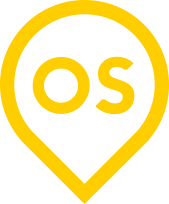How do you go about creating an Alexa skill?
By now, nearly everyone has interacted with a voice-activated digital assistant in some form or another.
One of the most popular is Amazon’s helpful protégé, Alexa. Alexa is designed to respond to thousands of basic commands such as:
“Alexa, what’s the weather today?”
“Alexa, play my morning Spotify playlist.”
“Alexa, read me my local news headlines.”
Voice assistants are one of the more influential additions to the Internet of Things (IoT) universe. As a user experience feature, these platforms are gaining exponentially in popularity, and Alexa currently holds a hefty portion of the market share in the smart speaker category (along with Google Assistant and Apple’s Siri).
While the voice assistant supports an endless list of features, an out-of-the-box Alexa is still limited to only the factory capabilities Amazon provides. That’s where Alexa Skills come in.
“Alexa, cool my bedroom to 68 degrees.”
“Alexa, donate $50 to my local American Heart Association chapter.”
“Alexa, enable Lyft.”
Alexa Skills are third-party apps that open up an entirely new world of Alexa capabilities. These skills allow your digital assistant to communicate with more devices and websites, taking the power of your smart speaker to the next level.
In this brief article, learn how to use Alexa skills, how to create them, and how to get the biggest benefit from each addition.
What is an Alexa Skill?
… and how does it work?
Alexa Skills are apps that expand the digital assistant’s functionality. These skills range from productivity to finance to shopping to business and even personal fitness. All available skills can be found on Amazon's Alexa Skills page. Currently, there are almost 60,000 skills available in the US, and you can learn about some of the best and most popular skills here.
These skills don’t come pre-installed, but they are available to all Alexa owners with a simple setup. To turn on these new features, you simply need to connect external accounts (like Spotify or your Dominos Pizza Profile) and external devices (like your smart coffee maker or home security system) via the Alexa app, and then ask Alexa to enable the associated skill.
Disclaimer: While all Alexa skills are free, some require a subscription service to operate properly.
Normally, a skill is activated with a specific command. The magic combination of words is usually something like “open/start/enable + invocation name + request”.
Smart home skills require users to connect other devices across the house, but don’t typically require an invocation command. Instead, once external devices have been connected, all the user has to do is make a request. “Turn the kitchen lights on” or “Make more ice,” for example. Alexa will then serve to relay that information to the lights, refrigerator, or whatever smart home device it needs to communicate with in order to complete the task.
Creating Skills
Thousands of brands across the globe have launched Alexa skills to make products or services more accessible to their customers. These third-party skills allow users to interact with Alexa in helpful, new ways—checking flight prices, ordering their morning coffee or queuing up weekly workout routines.
Third-party brands can create a specific skill for a product or service make it available in the marketplace — much like a normal mobile app on the iOS app store. In 2015, Amazon created the Alexa Skills Kit (ASK), allowing anyone with development access to create their own skill. The kit is free and uses Natural Language Programing (meaning there’s no need to worry about sophisticated speech recognition), which makes the ASK tools even easier for novices as it relates to complex NLP ideas.
Amazon makes it even easier by breaking down the types of skills that can be created into these four categories:
Flash Briefing Skills, which add news or information to the existing Alexa Flash Briefing
Video Skills, which allow users to control streaming services and internet-connected video playback devices
Smart Home Skills, which communicate with and control Wi-Fi-connected smart devices
Custom Skills, which fall into a catch-all category, including any skill that doesn’t belong to one of the three groups above
While flash briefing, smart home, and video Alexa Skills all have particular APIs that make them easier to work with, custom skills for specific products can be a little more challenging. These may require working with an experienced development partner in order to achieve the desired result. But it can certainly be worth the effort. Alexa skills allow device owners to take advantage of your company’s products or services without lifting a finger, streamlining the feedback process and generating better data on product utilization.
As the number of Alexa users across the globe continues to grow, Alexa Skills will become more and more useful to both the consumers who use them and the brands that create them. Businesses will need to keep pushing and innovating in this market to create personalized experiences—or risk losing relevance.

